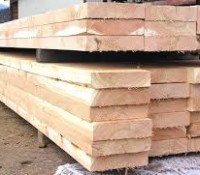Our Mission Statement
As a responsible partner TP delivers to clients, employees and the industries we serve the confidence to drive value through the effective use of our diverse professional team.
As a responsible partner TP delivers to clients, employees and the industries we serve the confidence to drive value through the effective use of our diverse professional team.
Southern yellow pine (SYP) lumber prices continue to climb into new record territory as we approach the summer months. Forest2Market’s composite southern yellow pine lumber price spiked to a new high of $521/MBF for the week ending May 11—a 7% jump from the previous week.
Individual product demand does influence the weekly composite price, and #2 2x6x16 PRIME boards led in both volume and revenue for the week ending May 11. These are premium products and the high sales volume/popularity is contributing to the significant jump in prices witnessed over the last several weeks.
Week 19’s price of $521/MBF was up from week 18’s price of $489/MBF. Week 19’s price is also a significant 28 percent above its January 2018 starting point of $408/MBF, and 24 percent above the 2017 week 19 price of $421/MBF.
A closer look at some of the prices we have seen since the beginning of the year:
While all building material prices remain at elevated levels, lumber prices have been driven higher by strong demand and a tightened supply due to tariffs on Canadian lumber imports, a shortage of harvestable acres due to beetle-killed timber in British Columbia and sustained high log prices in the Pacific Northwest. However, some analysts are predicting a steep drop off in lumber prices in the near term.
Courtesy of John Greene, Forest2Market

ALSC Rough Lumber Regulation 6.2.3 Interpretation Update
While many facilities do not use this regulation and will be unaffected by this change, it is important that those who do utilize it are aware of this situation.
ALSC lumber regulation 6.2.3 states in part:
“Unstamped heat treated rough lumber which has been heat treated at one mill or kiln operation and subsequently shipped to a second mill for surfacing or further processing, may be stamped HT or KDHT after processing provided all mills or kiln operations involved have in place an approved quality control program which maintains the identity of the material from heat treatment to final processing and marking, and which can be audited to verify compliance with heat treatment requirements. ALSC shall be informed in writing of each mill approved under this section. At a minimum the written quality control program shall require that:
1. Lumber bundle(s) shall be maintained intact until final processing and marking of the lumber
2. Lumber bundles(s) shall be marked with an identification mark which permits traceability to an approved heat treatment operation.
3. All facilities involved in the treating and processing of the lumber are audited by ALSC accredited agencies.
4. When multiple accredited agencies audit the different mill or kiln operation, each auditing agency shall be permitted access to review the quality control records of both treating and processing operation to verify compliance.”
This allowed for a bundle of rough lumber to ship to a second mill with a bundle mark in lieu of each piece being HT marked so long as the receiving mill marked each piece somewhere in their further processing of the lumber. In 2013 ALSC came out with an exception to this regulation:
“The production of rough heat-treated lumber at one mill that is processed into components and where no further processing of the components will take place is acceptable for use by a second mill or facility when the following conditions are met:
• All requirements of Section 6.2.3 are met, including defining the process in the written quality control program.
• The components are utilized at the second mill or facility for in-house WPM production; or,
• The rough heat treated lumber components are appropriately marked HT per the Lumber Enforcement Regulations requirements by the second mill or facility when shipped directly to another WPM facility for use in ISPM 15 compliant WPM.”
This allows precut, rough, HT components to ship from a mill with only a bundle mark, so long as the material that was received by the second facility, was used in-house for the manufacture of WPM that would be receiving an IPPC mark.
From here, we had additional discussions with ALSC where an understanding was reached that rough commodity-length HT lumber going to a second facility for in-house production of WPM would also fall under the same 6.2.3 exception as pre-cut components.
ALSC has now changed the interpretation on this to where rough commodity-length HT lumber, shipped with only a bundle mark, cannot be used in-house for WPM production receiving an IPPC mark until each piece receives an HT mark somewhere in the second facility’s processes. This HT mark can be added by the receiving facility when the material is received or anywhere else in their processes. Alternatively, they can stipulate to the originating mill, that the rough commodity-length HT lumber needs an HT mark before shipping.
To summarize, only rough HT Precut components can ship to a WPM facility with only a bundle mark (no HT marks on each piece) for in-house manufacture of IPPC marked WPM without requiring HT stamps to be applied first. Rough, commodity length HT lumber requiring further processing is no longer allowed to be used this way.
If you have any questions, please let us know.